This is a continuation of the Laundry Soap and Rock Candy experiments, so make sure you’ve done those before trying this one.
Please login or register to read the rest of this content.
This is a continuation of the Laundry Soap and Rock Candy experiments, so make sure you’ve done those before trying this one.
This experiment is for advanced students. Water Glass is another name for Sodium Silicate (Na2SiO3), which is one of the chemicals used to grow underwater rock crystal gardens. Metal refers to the metal salt seed crystal you will use to start your crystals growing. You can use any of the following metals listed. Note however, that certain metals will give you different colors of crystals.
Your crystals begin growing the instant you toss in the seed crystals. These crystals are especially delicate and fragile – just sloshing the liquid around is enough to break the crystal spikes, so place your solution in a safe location before adding your seed crystals.
After your garden has finished growing to the height and width you want, simply pour out the sodium silicate solution and replace with fresh water (or no water at all). Due do the nature of these chemicals, keep out of reach of small children, and build your garden with adult supervision.
Here’s what you need to get:
Charcoal crystals uses evaporation to grow the crystals, which will continue to grow for weeks afterward. You’ll need a piece of very porous material, such as a charcoal briquette, sponge, or similar object to absorb the solution and grow your crystals as the liquid evaporates. These crystals are NOT for eating, so be sure to keep your growing garden away from young children and pets! This project is exclusively for advanced students, as it more involves toxic chemicals than just salt and sugar.
Let’s see how much you’ve picked up with these experiments and the reading – answer as best as you can. (No peeking at the answers until you’re done!) Just relax and see what jumps to mind when you read the question. You can also print these out and jot down your answers in your science notebook.
Please login or register to read the rest of this content.
Please login or register to read the rest of this content.
Let’s see how much you’ve picked up with these experiments and the reading – answer as best as you can. (No peeking at the answers until you’re done!) Just relax and see what jumps to mind when you read the question. You can also print these out and jot down your answers in your science notebook.
Please login or register to read the rest of this content.
Let’s see how you did! If you didn’t get a few of these, don’t let it stress you out – it just means you need to play with more experiments in this area. We’re all works in progress, and we have our entire lifetime to puzzle together the mysteries of the universe!
Answers:
Please login or register to read the rest of this content.
Please login or register to read the rest of this content.
Let’s see how you did! If you didn’t get a few of these, don’t let it stress you out – it just means you need to play with more experiments in this area. We’re all works in progress, and we have our entire lifetime to puzzle together the mysteries of the universe!
Answers:
Please login or register to read the rest of this content.
Here’s our first MATH lesson. It is so easy that one night, I wound up showing it to everyone in the pizza restaurant. Well, everyone who would listen, anyway. We were scribbling down the answers right on the pizza boxes with such excitement that I couldn’t help it – I started laughing right out loud about how excited everyone was about math… especially on a Saturday night.
When you do this calculation in front of friends or family, it’s more impressive if you hand a calculator out first and let them know that you are ‘testing to see if the calculator is working right’. Ask for a two digit number and have them check the calculator’s answer against yours.
If you really want to go crazy, you can have math races against the calculator and its operator, just as the Arthur Benjamin video shows. (Only you don’t need to do the squaring of five-digit numbers in your head!) Have fun!
Please login or register to read the rest of this content.
If you can multiply 11 by any 2-digit number, then you can easily do any three digit number. There’s just an extra step, and make sure you always start adding near the ones so you can see where to carry the extra if needed.
Please login or register to read the rest of this content.
How many of these items do you already have? We’ve tried to keep it simple for you by making the majority of the items things most people have within reach (both physically and budget-wise), and even have broken down the materials by experiment category so you can decide if those are ones you want to do.
Here’s an easy way to decide which materials to get: look over the list, and if the group of materials seems to difficult to obtain, just skip it for now and go onto the next group within the unit. Most items are obtainable from the grocery store, hardware store, and places like that. You do not need to do ALL the experiments – just pick the ones you want to do!
Shopping List for Unit 3: Matter (Density & Solids) Click here for Shopping List for Unit 3.
Shaping Matter
Piece of bread
Scale
Pennies
Marbles
Cereal (about 20 pieces of anything)
States of Matter
Microwave
Grape (green, red, and/or black)
Ivory soap bar
Water bottle
Cooking oil (about ½ cup)
Two water or empty 2L soda bottles
Food coloring/dye (two colors: red, blue, etc.)
Crystals
10 cups of granulated sugar (any cheap brand)
Wooden skewer
Black construction paper
1 cup vinegar (distilled white)
Paper towel or coffee filter
Cleaned pickle, jam, or mayo glass jar
20-50 pennies
2 cups cornstarch
2 cups sand (yes, from the playground is fine)
Clean egg shell
1 full box of Borax
4-6 cups Epsom salts
10’ string or yarn
3-6 pipe cleaners
Optional: Nylon fishing line
Optional: Alum (check spice section or gardening aisle)
Electrolysis
2 test tubes or something clear and closed at one end
2 two wires, one needs to be copper (12 inches long)
1 cup
9 volt battery
Long match or a long thin piece of wood
Rubber bands
Masking tape
Salt (table salt is fine)
NOTE: KEEP CHEMICALS OUT OF REACH OF CHILDREN. **STORE THE AMMONIA SEPARATE FROM EVERYTHING ELSE.**
BBQ Crystals
Uniodized salt (sodium chloride)
Ammonia (clear, no additives)
Laundry bluing (you can find it at Amazon, WalMart, and some drug stores)
Charcoal briquette, sponge, brick, cork, or porous rock
Non-metal pie plate (an old glass pan works great)
Food (dye) coloring
This next experiment is completely optional!
Optional Additional for Advanced Students: Advanced Crystals
Sodium silicate
Select one (or more) of the following for the Advanced Crystals Experiment (the colors indicated are the colors your experiment will grow…)
Calcium Chloride (white crystals)
Iron Chloride (yellow crystals)
Cobalt Chloride (red crystals)
Copper Sulfate (blue crystals)
Store these chemicals out of reach of children and in a dry, cool location. We’ll be using these for the rest of the year in different experiments. DO NOT mix these chemicals with anything other than what we indicate, as you can generate lethal gases such as HCN.
How many of these items do you already have? We’ve tried to keep it simple for you by making the majority of the items things most people have within reach (both physically and budget-wise).
The shopping list for Astrophysics is small, as we don’t want you building a nuclear reactor in your garage… we’re going to be doing a lot of stuff online and in the reading for this unit. Subatomic particles moving near the speed of light are hard to work with anyway.
Are you ready?
Shopping List for Unit 7: Astrophysics Click here for Shopping List for Unit 7.
NOTE: Radio Shack part numbers have been replaced. Click here for full chart.
Material List:
2 sheets of paper
Tape
Small rocks
String
Magnet (any size)
Pencil
Radio that tunes near 100 MHz (the one in your car is perfect)
Black construction paper
Marble
Wire coat hanger (without insulation)
Aluminum foil
Clean, empty pickle jar
Hot glue gun, scissors, tape
For Advanced Students:
Clean, empty pickle jar (yes, another one)
Black felt
Small block of dry ice block (use gloves to handle very carefully)
Rubbing alcohol
YES, THAT’S IT!!
How many of these items do you already have? We've tried to keep it simple for you by making the majority of the items things most people have within reach (both physically and budget-wise), and even have broken down the materials by experiment category so you can decide if those are ones you want to do. Here's an easy way to decide which materials to get: look over the list, and if the group of materials seems to difficult to obtain, just skip it for now and go onto the next group within the unit. Most items are obtainable from the grocery store and online (links provided below). You do not need to do ALL the experiments - just pick the ones you want to do!
Shopping List for Unit 8: Chemistry Click here for Shopping List for Unit 8.
We’re going to be using real chemicals in this Unit, some of which are corrosive, hazardous, and most are toxic. This Unit is NOT for small children or households with loose pets (so stick Rover outside while you work). As you gather your equipment for this section, please keep ALL chemicals out of reach and sealed until you need them. We’ll show you how to safely store, mix, and clean up your chemicals. You can order all your chemicals from the same supplier (links provided below). We’ll be using this chemistry set for the rest of the year.
Make sure you have goggles and gloves for all experiments, and protect your table (put it near a window for good ventilation) with a thick plastic tablecloth. You’ll be using clear, disposable plastic cups and popsicle sticks to do your experimenting, so grab a box of each to last the entire year.
If you are planning to continue your studies in Chemistry by going on to the next Chemistry course after this one (Unit 15) and then later the Advanced Chemistry course, then you can save money by ordering the C3000 kit now to use for this lab as well. It doesn't have absolutely everything you need however - here's a couple of items you'll need to get in addition to the C3000 kit for the experiments in this course:
If you're not planning to purchase the C3000 because you only want to do this unit right now, here's the stuff you'll need for this course:
NO. Use either disposable plastic cups or glassware specifically designated for chemistry. Lots of chemicals will adhere to the glass and need to be etched off in order to get it ‘clean’ again. Don’t take chances…everything that comes in contact with a chemical – including the measuring spoons – is now part of your chemistry set.
How many of these items do you already have? We’ve tried to keep it simple for you by making the majority of the items things most people have within reach (both physically and budget-wise), and even have broken down the materials by experiment category so you can decide if those are ones you want to do.
Here’s an easy way to decide which materials to get: look over the list, and if the group of materials seems to difficult to obtain, just skip it for now and go onto the next group within the unit. Most items are obtainable from the grocery store, hardware store, and online! You do not need to do ALL the experiments – just pick the ones you want to do!
Shopping List for Unit 6: Energy: Sound, Vibration & Resonance Click here for Shopping List for Unit 6.
NOTE: Radio Shack part numbers have been replaced. Click here for full chart.
Wave Demonstrations
3’ & 10’ string or rope
Weight that can be tied to the end of the string
A timer or stopwatch
Masking tape
2 slinky toys (both are the same size)
Optional: Bathtub, water, ball
Noise Makers
3 popsicle sticks (tongue depressor size)
2 index card (3×5”)
Scissors, tape, hot glue gun
2 film canisters (or plastic snap-lid M&M containers)
Straw
Three 7-9” balloons
2 water balloons
3’ string
Rubber bands (four 3”x 1/8” and four 3” x ¼” )
Disposable cup (plastic, foam, paper…)
Hexnut (1/4” or smaller)
Razor or drill to make hole in the film canister
Optional: Violin rosin (it’s worth it if you can find it!)
Properties of Sound
Empty glass bottle AND plastic water bottle
Metal fork
2 sheets of stiff paper
3 feet of each: yarn, string, thread, and/or fishing line
Disposable cup
Empty soup can
7-9” balloon
Flashlight or laser (if you have it)
Scissors, tape
Small mirror (from a compact or makeup kit, or use a 1” mosaic mirror from the craft store)
Sand (10-12 cups)
5’ string
Dish towel
Optional Speaker Project:
Record player (turntable)
Margarine tub
Tack
Old record that can be scratched
Build Real Speakers
You’ll be making three different kinds of speakers here.
Foam plate (paper and plastic don’t work as well)
Sheet of copy paper
3 business cards
Magnet wire AWG 28
2 neodymium magnets**
Disc or donut shaped magnet
Index cards or stiff paper
Plastic disposable cup
Tape
Hot glue gun
Scissors
1 audio plug or other cable that fits into your stereo (iPODs and other small devices are not recommended for this project – you need something with built-in amplifier)
OPTIONAL: Chladni Resonance
(Hint – this experiment has the potential for a jaw-dropping science fair project.)
Salt (get two containers, both with a pour spout)
Scrap of metal plate (anything that’s flat will work that’s at least 6” square, preferably 12”)
Clamp (to hold your plate to the table)
Bass fiddle bow (rent or borrow one if you can – this experiment is totally worth it!) with lots of violin rosin
**Special Note About Magnets** If you’re ordering magnets, here’s a list for future projects we’re covering this year as well. (Keep these FAR AWAY from anything electronic!! And be very careful not to let them jump together, or they will crack and fracture because they are so powerful, especially the gold-plated ones!) Here’s a list of the magnets we will be using this year:
9 nickel-plated ball bearings (NSBA) for the Linear Accelerator
Two 5/8” x ¼” high (DA4) for the Speakers
Four ½” gold plated cubes (B888) for the Linear Accelerator
Two tiny bead magnets (R211 and/or R311) for the Curie Heat Engine
Two disc magnets (D21) for the Rail Accelerator
Two gold-plated disc magnets (D41G) for the Rail Accelerator
Five disc magnets (DC2) for the DC Motor
One ceramic magnet for the Curie Heat Engine
How many of these items do you already have? We’ve tried to keep it simple for you by making the majority of the items things most people have within reach (both physically and budget-wise), and even have broken down the materials by experiment category so you can decide if those are ones you want to do.
Here’s an easy way to decide which materials to get: look over the list, and if the group of materials seems to difficult to obtain, just skip it for now and go onto the next group within the unit. Most items are obtainable from the grocery store, hardware store, and online! You do not need to do ALL the experiments – just pick the ones you want to do!
Shopping List for Unit 5: Kinetic & Potential Energy Click here for Shopping List for Unit 5.
NOTE: Radio Shack part numbers have been replaced. Click here for full chart.
Ramp Races
Several small balls of different weights (golf ball, racket ball, ping pong ball, marble etc.)
Good size container or mixing bowl
Flour or corn starch or any kind of light powder
Pie tin or other shallow container
Tape measure or yard stick
Optional: Spring scale or kitchen scale
Roller Coasters & Bobsleds
3 pieces ¾” pipe insulation (non-adhesive, black foam)
20 marbles
1 roll masking tape
Aluminum foil
Scissors
Gift wrap tube or clear fluorescent-lamp tube
Stopwatch, yardstick
Catapult
6 rubber bands
2 plastic spoons
9 tongue-depressor popsicle sticks
14 regular-size popsicle sticks
Hot glue gun and glue sticks
wooden clothespin
straw
wood skewer or dowel
Marshmallows, wadded up paper sheets or aluminum foil balls
Pendulums
Yardstick
A washer or a weight of some kind
Stopwatch
4 index cards (any size)
10 Thumb tacks (or brass fasteners)
Big, heavy hex nut
10’ string or yarn
6 strong donut-shaped ring magnets
P-Shooter
Mechanical pencil (cheap kind)
2 thin rubber bands
Razor (get adult help)
Baking potato (raw)
Protractor
Straw
String
Rock or key (to use as weight)
Stopwatch
Acrylic tubing (approx 1/2” diameter)
¼” wood dowel (should fit inside acrylic tube)
Washer (make sure that the inner diameter of washer smaller than outer diameter of acrylic tube, so the washer cannot slide up the tube)
How many of these items do you already have? We’ve tried to keep it simple for you by making the majority of the items things most people have within reach (both physically and budget-wise), and even have broken down the materials by experiment category so you can decide if those are ones you want to do.
Here’s an easy way to decide which materials to get: look over the list, and if the group of materials seems to difficult to obtain, just skip it for now and go onto the next group within the unit. Most items are obtainable from the grocery store, hardware store, and online! You do not need to do ALL the experiments – just pick the ones you want to do!
Shopping List for Unit 4: Pulleys, Levers, and Mechanical Advantage Click here for Shopping List for Unit 4.
NOTE: Radio Shack part numbers have been replaced. Click here for full chart.
Pulleys
50’+ Rope (use nylon rope with >200 pound tensile strength that fits through your pulleys)
Pulleys (at least 6 small ones)
Fishing line
Two broomsticks (or use a tree)
Pen (any size)
Large, heavy nut
6” length of ½” PVC pipe
Wire coat hanger
Thread spool
Vice grips and pliers
Optional: Thick slab of wood to make a pulley-swing
Optional: Roller skate (the old-fashioned kind with a wheel at each corner) and a large rubber band
Levers
Stud (2x4x96” or other long, strong piece of scrap wood to play with)
Hydraulic/Pneumatic Earth Mover
Disposable plastic cup
20+ tongue-depressor-size popsicle sticks
6 syringes (anything in 3-10mL size range will work)
6 brass fasteners
Thin wire or narrow zip ties
5’ of flexible tubing (fits over the nose of syringes)
four wheels (use film canister lids, yogurt container lids, milk jug lids, etc.)
4 rubber bands
two naked (unwrapped) straws
skewers that fit inside your straws
hot glue gun (with glue sticks)
sharp scissors or razor (get adult help)
drill with small drill bits (you’ll be drilling holes large enough to fit the stem of a brass fastener)
Trebuchet (review shopping list on experiment page so you can watch the video and see how long to cut the wood)
So you’ve played with lenses, mirrors, and built an optical bench. Want to make a real telescope? In this experiment, you’ll build a Newtonian and a refractor telescope using your optical bench.
Materials:
We’re going to learn about the three universal laws of physical motion in addition to looking at velocity, acceleration, and inertia. This video is a great way to get started before jumping into the experiments, as it lays the foundation of what we’ll be covering as well as what you can expect to learn along the way. We’re also going to cover how to take data, reduce your data into meaningful results, and calculate both acceleration and velocity of objects in your experiments.
If you’re on the younger side, don’t worry about the math and just dive in and start having fun with the activities. If you are an older student looking for clarity on just how gyroscopic precession works with angular momentum, then you’re in the right place. We’ve provided you with textbook readings as well, so feel free to check those out when you’re done with this movie. This video covers both acceleration and velocity, and really gets you started on the right foot. We’ll outline what’s coming up for this week and how to get the most out of our lesson together. Enjoy!
Next time you watch a drag race, notice the wheels. Are they solid metal discs, or do they have holes drilled through the rims? I came up with this somewhat silly, but incredibly powerful quick science demonstration to show my 2nd year university students how one set of rims could really make a difference on the racetrack (with all other things being equal).
Please login or register to read the rest of this content.
Please login or register to read the rest of this content.
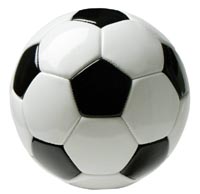 This experiment is one of my favorites in this acceleration series, because it clearly shows you what acceleration looks like.
This experiment is one of my favorites in this acceleration series, because it clearly shows you what acceleration looks like.
The materials you need is are:
For advanced students, you will also need: a timer or stopwatch, pencil, paper, measuring tape or yard stick, and this printout.
Grab a friend to help you out with this experiment – it’s a lot easier with two people.
Are you ready to get started really discovering what acceleration is all about?
Here’s what you do:
Please login or register to read the rest of this content.
Please login or register to read the rest of this content.
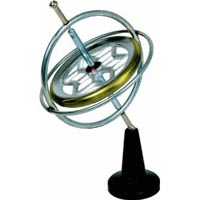 Gyroscopes defy human intuition, common sense, and even appear to defy gravity. You’ll find them in aircraft navigation instruments, games of Ultimate Frisbee, fast bicycles, street motorcycles, toy yo-yos, and the Hubble Space Telescope. And of course, the toy gyroscope (as shown here). Gyroscopes are used at the university level to demonstrate the principles of angular momentum, which is what we’re going to learn about here.
Gyroscopes defy human intuition, common sense, and even appear to defy gravity. You’ll find them in aircraft navigation instruments, games of Ultimate Frisbee, fast bicycles, street motorcycles, toy yo-yos, and the Hubble Space Telescope. And of course, the toy gyroscope (as shown here). Gyroscopes are used at the university level to demonstrate the principles of angular momentum, which is what we’re going to learn about here.
If you happen to have one of these toy gyroscopes, pull it out and play with it (although it’s not essential to this experiment). Notice that you can do all sorts of things with it when you spin it up, such as balance it on one finger (or even on a tight string). Wrap one end with string and hold the string vertically and you’ll find the gyro slowly rotates about the vertical string instead of flopping downward (as most objects do in Earth’s gravitational field). But why? Here’s the answer in plain English:
Please login or register to read the rest of this content.
Please login or register to read the rest of this content.
Newton’s Second Law is one of the toughest of the laws to understand but it is very powerful. In its mathematical form, it is so simple, it’s elegant. Mathematically it is F=ma or Force = Mass x Acceleration. An easy way to remember that is to think of your mother trying to get you out of bed in the morning. Force equals MA’s coming to get you! (I did mention how bad physics jokes are, right?)
Ever wonder how magicians work their magic? This experiment is worthy of the stage with a little bit of practice on your end.
Here’s how this activity is laid out: First, watch the video below. Next, try it on your own. Make sure to send us your photos of your inventions here!
 Let's take a good look at Newton's Laws in motion while making something that flies off in both directions. This experiment will pop a cork out of a bottle and make the cork fly go 20 to 30 feet, while the vehicle moves in the other direction!
Let's take a good look at Newton's Laws in motion while making something that flies off in both directions. This experiment will pop a cork out of a bottle and make the cork fly go 20 to 30 feet, while the vehicle moves in the other direction!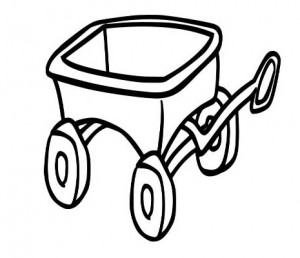 This is a quick and easy demonstration of how to teach Newton’s laws with minimal fuss and materials. All you need is a wagon, a rock, and some friends. We’re going to do a few totally different experiments using the same materials, though, so keep up with the changes as you read through the experiment.
This is a quick and easy demonstration of how to teach Newton’s laws with minimal fuss and materials. All you need is a wagon, a rock, and some friends. We’re going to do a few totally different experiments using the same materials, though, so keep up with the changes as you read through the experiment.
Remember that Newton covers a few different ideas. First, there’s the idea that objects in motion will stay going they way they’re headed, unless something gets in the way. Then there’s the resistance to motion (objects at rest tend to stay put), as well as force being proportional to how fast you can get something to move (acceleration). And lastly, there’s the idea that forces happen in pairs – if you shoot something one direction, you’re going to feel a kick in the opposite direction. Ready to see these ideas in action? Let’s go…
If you jump out of an airplane, how fast would you fall? What’s the greatest speed you would reach? Let’s practice figuring it out without jumping out of a plane.
This experiment will help you get the concept of velocity by allowing you to measure the rate of fall of several objects. It’s also a great experiment to record in your science journal.
First, you’ll need to find your materials:
A common misconception in science is that centrifugal and centripetal force (or acceleration) are the same thing. These two terms constantly throw students into frenzy, mostly because there is no clear definition in most textbooks. Here’s the scoop: centripetal and centrifugal force are NOT the same thing!
This experiment is mostly for Advanced Students, but here’s a quick lesson you can do with your younger students…
Please login or register to read the rest of this content.
Please login or register to read the rest of this content.
We’re going to experiment with Newton’s Third law by blowing up balloons and letting them rocket, race, and zoom all over the place. When you first blow up a balloon, you’re pressurizing the inside of the balloon by adding more air (from your lungs) into the balloon. Because the balloon is made of stretchy rubber (like a rubber band), the balloon wants to snap back into the smallest shape possible as soon as it gets the chance (which usually happens when the air escapes through the nozzle area). And you know what happens next – the air inside the balloon flows in one direction while the balloon zips off in the other.
Question: why does the balloon race all over the room? The answer is because of something called ‘thrust vectoring’, which means you can change the course of the balloon by angling the nozzle around. Think of the kick you’d feel if you tried to angle around a fire hose operating at full blast. That kick is what propels balloons and fighter aircraft into their aerobatic tricks.
We’re going to perform several experiments here, each time watching what’s happening so you get the feel for the Third Law. You will need to find:
First, let’s experiment with the balloon. Here’s what you can do:
This is a satisfyingly simple activity with surprising results. Take a tennis ball and place it on top of a basketball… then release both at the same time.
Instant ball launcher!
You’ll find the top ball rockets off skyward while the lower ball hit the floor flat (without bouncing much, if at all). Now why is that? It’s easier to explain than you think…
Remember momentum? Momentum can be defined as inertia in motion. Something must be moving to have momentum. Momentum is how hard it is to get something to stop or to change directions. A moving train has a whole lot of momentum. A moving ping pong ball does not. You can easily stop a ping pong ball, even at high speeds. It is difficult, however, to stop a train even at low speeds.
Mathematically, momentum is mass times velocity, or Momentum=mv.
One of the basic laws of the universe is the conservation of momentum. When objects smack into each other, the momentum that both objects have after the collision, is equal to the amount of momentum the objects had before the crash. Once the two balls hit the ground, all the larger ball’s momentum transferred to the smaller ball (plus the smaller ball had its own momentum, too!) and thus the smaller ball goes zooming to the sky.
Materials:
 This experiment is for advanced students.It’s time for the last lesson of mechanics. After all this time, you now have a good working knowledge of the rules that govern almost all movement on this planet and beyond!! This lesson we get to learn about things crashing into one another!! Isn’t physics fun?! We are going to learn about impulse and momentum.
This experiment is for advanced students.It’s time for the last lesson of mechanics. After all this time, you now have a good working knowledge of the rules that govern almost all movement on this planet and beyond!! This lesson we get to learn about things crashing into one another!! Isn’t physics fun?! We are going to learn about impulse and momentum.
Please login or register to read the rest of this content.
Let’s see how much you’ve picked up with these experiments and the reading – answer as best as you can. (No peeking at the answers until you’re done!) Just relax and see what jumps to mind when you read the question. You can also print these out and jot down your answers in your science notebook.
Please login or register to read the rest of this content.
Please login or register to read the rest of this content.
Need answers?
Let’s see how much you’ve picked up with these experiments and the reading – answer as best as you can. (No peeking at the answers until you’re done!) Just relax and see what jumps to mind when you read the question. You can also print these out and jot down your answers in your science notebook.
Please login or register to read the rest of this content.
Please login or register to read the rest of this content.
Need answers?
Let’s see how you did! If you didn’t get a few of these, don’t let it stress you out – it just means you need to play with more experiments in this area. We’re all works in progress, and we have our entire lifetime to puzzle together the mysteries of the universe!
Here’s printer-friendly versions of the exercises and answers for you to print out: Simply click here for K-8 and here for K-12.
Answers:
Please login or register to read the rest of this content.
Please login or register to read the rest of this content.
Let’s see how you did! If you didn’t get a few of these, don’t let it stress you out – it just means you need to play with more experiments in this area. We’re all works in progress, and we have our entire lifetime to puzzle together the mysteries of the universe!
Here’s printer-friendly versions of the exercises and answers for you to print out: Simply click here for K-8 and here for K-12.
Answers:
Please login or register to read the rest of this content.
Please login or register to read the rest of this content.
How many of these items do you already have? We’ve tried to keep it simple for you by making the majority of the items things most people have within reach (both physically and budget-wise), and even have broken down the materials by experiment category so you can decide if those are ones you want to do.
Here’s an easy way to decide which materials to get: look over the list, and if the group of materials seems to difficult to obtain, just skip it for now and go onto the next group within the unit. Most items are obtainable from the grocery store, hardware store, and online! You do not need to do ALL the experiments – just pick the ones you want to do!
Shopping List for Unit 2: Velocity & Acceleration Click here for Shopping List for Unit 2.
NOTE: Radio Shack part numbers have been replaced. Click here for full chart.
Velocity
Vehicle with a licensed driver
Small ball (ping pong, golf ball, tennis ball, bouncy ball, etc.)
Wagon or skateboard
Friends
Hardcover book
Toilet paper tube
Plastic cup
A ball that is larger than the end of the toilet paper tube but smaller than the plastic cup
Stop watch or clock with a second hand
Feathers, small pieces of paper, plastic bag or anything light and fluffy (cotton or dust bunnies will work, too)
Tape measure or ruler
Calculator
Optional: broom
Acceleration
NOTE: YOU DO NOT NEED ALL THESE ITEMS! WE’RE POSTING A LOT OF ACCELERATION EXPERIMENTS, SO YOU CAN PICK AND CHOOSE THE ONES YOU WANT TO DO. JUST GATHER THE ITEMS YOU CAN GET EASILY RIGHT NOW AND SAVE THE REST FOR LATER. AGAIN – YOU DO NOT NEED TO DO ALL OF THESE! (Unless you are an over-achiever like Aurora…) Don’t stress – this is supposed to be fun!
At least 3 feet of fairly smooth board (a slightly sloping driveway works well too)
Books, wood chunks, something to prop one end of the board up on
A hard smooth ball (a golf ball, racket ball, pool ball etc.)
A timer
Pencil, paper (or your journal)
Measuring tape or yard stick
Chalk or masking tape to mark off distances
Empty 2-liter soda bottle
Clean wine cork (use the one from your compass from Unit 1)
Water
Hot glue gun with glue sticks
Bicycle wheel
Rope (about 3′)
Office chair that spins freely
10 balloons (get a pack that has the round 7-9″ ones as well as the long balloon-animal kind)
6 straws
6 thin, round, wooden skewers
1 sheet of copy paper
1 index card
Scotch tape and scissors
8 small, round film canister or milk-jug lids (anything round about the size of a quarter that you can punch a hole through the center and use for wheels)
Small piece of stiff cardboard (about 4″ x 6″) – you can use an old cereal box, too
2 foam cups
Fishing line (or heavy thread) – you’ll need to span a room in your house, so about 20′ is typically a good estimate
Heaviest rock you can throw safely
Baking soda (about 1/4 cup)
Distilled white vinegar (about 1/4 cup)
Alka seltzer (get a pack of 24 tablets)
Film canister or small M&M container with the snap-on lid (or use a plastic bottle with a tight-fitting cork)
Campbell’s Chicken broth soup in a can – make sure there’s no pieces, just broth (unopened – you won’t be eating this)
Campbell’s Clam chowder soup in a can (unopened – you won’t be eating this one, either)
Long (4’+) table or slightly slanted driveway
1/2″ or larger clear diameter tubing, 12-18″ long
Nylon (or metal, but it’s more expensive) barbed union – check the plumbing aisle in the hardware store
Food coloring (3 drops, any color)
Permanent marker
We’re going to throw in a few math lessons here and there, so if math really isn’t your thing, free free to just watch the videos and see what you think. All of these lessons require only a brain, and once in awhile paper and pencil, so this area is ‘materials-free’ and jam-packed with great mathematical content. If you’re the parent, stick a calculator in your pocket and test out your kids as they go along.
Some of what we cover here is based on the book “Secrets of Mental Math” by Arthur Benjamin, an incredible professor at Harvey Mudd College. He’s also known as the “Lightning Human Calculator”. Here’s a video about him you may enjoy:
Please login or register to read the rest of this content.
How many of these items do you have?
You'll find dozens of experiments with every lesson, so you can pick and choose the experiments you want to do. This program has hundreds of experiments, projects, and activities to choose from depending on your child's interest, your family budget, and what's available to you in your area. You don't need to do them all to get a great science education!
Here's how to use this shopping list:
We've tried to keep it simple for you by making the majority of the items things most people have within reach (both physically and budget-wise). We'll be re-using these materials in later units as well.
Shopping List for Unit 1: Force, Gravity, & Friction Click here for Shopping List for Unit 1.
NOTE: Radio Shack part numbers have been replaced. Click here for full chart.
Force Experiments
Balloon (7-9" Latex works great)
Ping Pong Ball
Tissue paper or newspaper
Handful of packing peanuts or paper confetti
Bubble juice (make your own with 12 cups cold water and 1 cup liquid dish soap)
Ball (any size)
Compass (or make your own from a needle, cup of water, magnet, and a cork)
Paper clips (10-15)
Magnet
String or yarn (about 2 feet long)
O-shaped cereal (any brand is fine)
Milk (or water)
Spoon and bowl
Rope (about 3' long)
Paper (copy paper is fine, but if you can find at least one sheet of heavy paper like cardstock, that would be even better)
Two pencils or sticks
Index cards
Blocks
Straws
Disposable cups
Clay
OPTIONAL: (These are not required, but still nice to have...)
Fluorescent bulb
Wool sweater
Plastic bag (like from the grocery store)
Gravity Experiments
Ball (any size)
Stopwatch or timer
Pencil
Paper
Ruler
2 quarters
Ping Pong Ball and Golf Ball (or two different kinds of balls that are the same size but different weight)
OPTIONAL: Hovercraft Project
Friction Experiments:
There are four forces in the universe that make everything move, shift, explode, zoom, wiggle, and dance. As two of these forces require a nuclear reactor in your garage, we’ll just focus on the other two for now: the electromagnetic and the gravitational.
This video gets you started on the right foot. We’ll outline what’s coming up for this week and how to get the most out of our lesson together. Enjoy!
Ok, sort of a silly experiment I admit. But here’s what we’re going for – there is an invisible force acting on you and the ball. As you will see in later lessons, things don’t change the way they are moving unless a force acts on them. When you jump, the force that we call gravity pulled you back to Earth. When you throw a ball, something invisible acted on the ball forcing it to slow down, turn around, and come back down. Without that force field, you and your ball would be heading out to space right now!
Please login or register to read the rest of this content.
Remember, there are four different kinds of forces: strong nuclear force,
electromagnetism, weak nuclear force, and gravity. There are also four basic force fields that you come into contact with all the time. They are the gravitational field, the electric field, the magnetic field, and the electromagnetic field. Notice that those four force fields really only use two of the four different kinds of force: electromagnetism and gravity. Let’s take a quick look at what causes these four fields and what kind of objects they can affect, starting with the magnetic field.
Here’s what you need:
Please login or register to read the rest of this content.
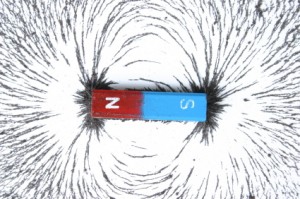 The electromagnetic field is a bit strange. It is caused by either a magnetic field or an electric field moving. If a magnetic field moves, it creates an electric field. If an electric field moves, it creates a magnetic field.
The electromagnetic field is a bit strange. It is caused by either a magnetic field or an electric field moving. If a magnetic field moves, it creates an electric field. If an electric field moves, it creates a magnetic field.
Please login or register to read the rest of this content.
Please login or register to read the rest of this content.
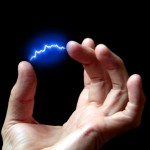 You are actually fairly familiar with electric fields too, but you may not know it. Have you ever rubbed your feet against the floor and then shocked your brother or sister? Have you ever zipped down a plastic slide and noticed that your hair is sticking straight up when you get to the bottom? Both phenomena are caused by electric fields and they are everywhere!
You are actually fairly familiar with electric fields too, but you may not know it. Have you ever rubbed your feet against the floor and then shocked your brother or sister? Have you ever zipped down a plastic slide and noticed that your hair is sticking straight up when you get to the bottom? Both phenomena are caused by electric fields and they are everywhere!
Have you ever been close to something that smells bad? Have you noticed that the farther you get from that something, the less it smells, and the closer you get, the more it smells? Well forces sort of work in the same way.
Forces behave according to a fancy law called the inverse-square law. To be technical, an inverse-square law is any physical law stating that some physical quantity or strength is inversely proportional to the square of the distance from the source of that physical quantity.
The inverse-square law applies to quite a few phenomena in physics. When it comes to forces, it basically means that the closer an object comes to the source of a force, the stronger that force will be on that object. The farther that same object gets from the force’s source, the weaker the effect of the force.
Mathematically we can say that doubling the distance between the object and the source of the force makes the force 1/4th as strong. Tripling the distance makes the force 1/9th as strong. Let’s play with this idea a bit.
Here’s what you need:
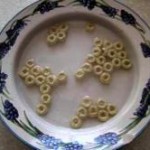 Did you know that your cereal may be magnetic? Depending on the brand of cereal you enjoy in the morning, you’ll be able to see the magnetic effects right in your bowl. You don’t have to eat this experiment when you’re done, but you may if you want to (this is one of the ONLY times I’m going to allow you do eat what you experiment with!) For a variation, pull out all the different boxes of cereal in your cupboard and see which has the greatest magnetic attraction.
Did you know that your cereal may be magnetic? Depending on the brand of cereal you enjoy in the morning, you’ll be able to see the magnetic effects right in your bowl. You don’t have to eat this experiment when you’re done, but you may if you want to (this is one of the ONLY times I’m going to allow you do eat what you experiment with!) For a variation, pull out all the different boxes of cereal in your cupboard and see which has the greatest magnetic attraction.
It is very rare, especially on Earth, to have an object that is experiencing force from only one direction. A bicycle rider has the force of air friction pushing against him. He has to fight against the friction between the gears and the wheels. He has gravity pulling down on him. His muscles are pushing and pulling inside him and so on and so on.
Even as you sit there, you have at least two forces pushing and pulling on you. The force of gravity is pulling you to the center of the Earth. The chair is pushing up on you so you don’t go to the center of the Earth. So with all these forces pushing and pulling, how do you keep track of them all? That’s where net force comes in.
The net force is when you add up all of the forces on something and see what direction the overall force pushes in. The word “net”, in this case, is like net worth or net income. It’s a mathematical concept of what is left after everything that applies is added and subtracted. The next activity will make this clearer.
Here’s what you need:
This roof can support over 400 times its own weight, and you don’t need tape! One of the great things about net forces is that although the objects can be under tremendous force, nothing moves! For every push, there’s an equal and opposite pull (or set of pulls) that cancel each other out.
This barrel roof is an excellent example of how to the forces all cancel out and the roof stands strong (hopefully!) If you have trouble with this experiment, just use cardstock or other heavy weight paper instead of regular copy paper.
Here’s what you need:
Please login or register to read the rest of this content.
Let’s see how much you’ve picked up with these experiments and the reading – answer as best as you can. (No peeking at the answers until you’re done!) Just relax and see what jumps to mind when you read the question. You can also print these out and jot down your answers in your science notebook.
Please login or register to read the rest of this content.
Please login or register to read the rest of this content.
Let’s see how you did! If you didn’t get a few of these, don’t let it stress you out – it just means you need to play with more experiments in this area. We’re all works in progress, and we have our entire lifetime to puzzle together the mysteries of the universe!
Answers:
Please login or register to read the rest of this content.
No one can tell you why gravity is… that’s just the way the universe is wired. Gravitation is a natural thing that happens when you have mass. Galileo was actually one of the first people to do science experiment on gravity.
Galileo soon figured out that objects could be the same shape and different weights (think of a golf ball and a ping pong ball), and they will still fall the same. It was only how they interacted with the air that caused the fall rate to change. By studying ramps (and not just dropping things), he could measure how long things took to drop using not a stopwatch but a water clock (imagine having a sink that regularly dripped once per second). Let’s learn more about gravity right now:

Galileo was actually one of the first people to do science experiments on gravity using the tallest tower he could find – the Tower of Pisa in Italy. At least, that’s what we’ve been told. But Galileo, who always wrote everything down, never mentioned in his notes of dropping things off the tower. What he did document, however, was rolling things down ramps (also called ‘inclines’). Remember that at this time in history, most people were still answering questions by simply arguing about them instead of doing any scientific studies!
Please login or register to read the rest of this content.
Please login or register to read the rest of this content.
This lesson may give you a sinking sensation but don’t worry about it. It’s only because we’re talking about gravity. You can’t go anywhere without gravity. Even though we deal with gravity on a constant basis, there are several misconceptions about it. Let’s get to an experiment right away and I’ll show you what I mean.
If I drop a ping pong ball and a golf ball from the same height, which one hits the ground first? How about a bowling ball and a marble?
Here’s what you need:
You have just taken in a nice bunch of information about the wild world of gravity. This next section is for advanced students, who want to go even deeper. There’s a lot of great stuff here but there’s a lot of math as well. If you’re not a math person, feel free to pass this up. You’ll still have a nice understanding of the concept. However, I’d recommend giving it a try. There are some fun things to do and if you’re not careful, you might just end up enjoying it!
Here’s what you need:
Let’s see how much you’ve picked up with these experiments and the reading – answer as best as you can. (No peeking at the answers until you’re done!) Just relax and see what jumps to mind when you read the question. You can also print these out and jot down your answers in your science notebook.
Please login or register to read the rest of this content.
Let’s see how you did! If you didn’t get a few of these, don’t let it stress you out – it just means you need to play with more experiments in this area. We’re all works in progress, and we have our entire lifetime to puzzle together the mysteries of the universe!
Answers:
Please login or register to read the rest of this content.
Please login or register to read the rest of this content.
Friction is a very complicated interaction that uses ideas from both the electromagnetic field as well as the chemistry field to fully explain exactly what it is and how it works. From ice skates to moving furniture, you encounter friction everyday. We’re going to use rubber bands, shoes, ramps, and more to experiment with these ideas on our own.
Now let’s talk about the other ever present force on this Earth, and that’s friction. Friction is the force between one object rubbing against another object. Friction is what makes things slow down.
Without friction things would just keep moving unless they hit something else. Without friction, you would not be able to walk. Your feet would have nothing to push against and they would just slide backward all the time like you’re doing the moon walk.
Friction is a very complicated interaction between pressure and the type of materials that are touching one another. Let’s do a couple of experiments to get the hang of what friction is.
Here’s what you need:
Friction is everywhere! Imagine what the world would be like without friction! Everything you do, from catching baseballs to eating hamburgers, to putting on shoes, friction is a part of it. If you take a quick look at friction, it is quite a simple concept of two things rubbing together.
However, when you take a closer look at it, it’s really quite complex. What kind of surfaces are rubbing together? How much of the surfaces are touching? And what’s the deal with this stick and slip thing anyway? Friction is a concept that’s many scientists are spending a lot of time on. Understanding friction is very important in making engines and machines run more efficiently and safely.
Here’s what you need:
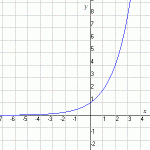 Find a smooth, cylindrical support column, such as those used to support open-air roofs for breezeways and outdoor hallways (check your local public school or local church). Wind a length of rope one time around the column, and pull on one end while three friends pull on the other in a tug-of-war fashion.
Find a smooth, cylindrical support column, such as those used to support open-air roofs for breezeways and outdoor hallways (check your local public school or local church). Wind a length of rope one time around the column, and pull on one end while three friends pull on the other in a tug-of-war fashion.Stand on a cookie sheet or cutting board which is placed on the floor (find a smooth floor with no carpet). Ask someone to gently push you across the floor. Notice how much friction they feel as they try to push you.
Want to make this job a bit easier?
Here’s what you need:
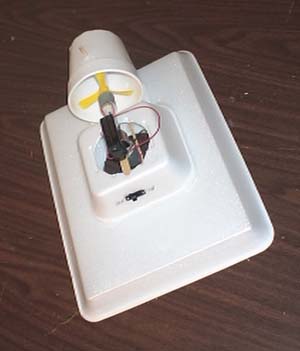 Hovercraft transport people and their stuff across ice, grass, swamp, water, and land. Also known as the Air Cushioned Vehicle (ACV), these machines use air to greatly reduce the sliding friction between the bottom of the vehicle (the skirt) and the ground. This is a great example of how lubrication works – most people think of oil as the only way to reduce sliding friction, but gases work well if done right.
Hovercraft transport people and their stuff across ice, grass, swamp, water, and land. Also known as the Air Cushioned Vehicle (ACV), these machines use air to greatly reduce the sliding friction between the bottom of the vehicle (the skirt) and the ground. This is a great example of how lubrication works – most people think of oil as the only way to reduce sliding friction, but gases work well if done right.
In this case, the readily-available air is shoved downward by the hover motor and the skirt traps the air and keeps it inside, thus lifting the vehicle slightly. The thruster motor’s job is to propel the craft forward. Most hovercraft use either two motors (one on each side) for steering, or just one with a rudder that can deflect the flow (as your project does).
The first hovercraft were thought about in the 1800s, but it wasn’t until the 1950s that real ones were first tested. Today, the military use them for patrolling hard-to-drive areas, scientists use them for swamp research studies, and businesses use them to transport toys and food across rough and icy areas. Scientists are already planning future ACVs to use magnetic levitation in addition to the air power… but it’s still on the drawing board.
Are you ready to make your own? We have TWO different models to choose from. Click this link for the Easy Balloon-Powered Model, or keep reading below for the advanced version.
Please login or register to read the rest of this content.
Let’s see how much you’ve picked up with these experiments and the reading – answer as best as you can. (No peeking at the answers until you’re done!) Just relax and see what jumps to mind when you read the question. You can also print these out and jot down your answers in your science notebook.
Let’s see how you did! If you didn’t get a few of these, don’t let it stress you out – it just means you need to play with more experiments in this area. We’re all works in progress, and we have our entire lifetime to puzzle together the mysteries of the universe!
Answers:
Please login or register to read the rest of this content.
This neat little trick shortcuts the multiplication process by breaking it into easy chunks that your brain can handle. The first thing you need to do is multiply the digits together, then double that result and add a zero, and then square each digit separately, and finally add up the results.
Slightly confused? Great – we made a video that outlines each step. There’s a definite pattern and flow to it. With practice, you will be able to do this one in your head within a very short time. Have fun!
Please login or register to read the rest of this content.
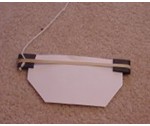 Sound is everywhere. It can travel through solids, liquids, and gases, but it does so at different speeds. It can rustle through trees at 770 MPH (miles per hour), echo through the ocean at 3,270 MPH, and resonate through solid rock at 8,600 MPH.
Sound is everywhere. It can travel through solids, liquids, and gases, but it does so at different speeds. It can rustle through trees at 770 MPH (miles per hour), echo through the ocean at 3,270 MPH, and resonate through solid rock at 8,600 MPH.
Sound is made by things vibrating back and forth, whether it’s a guitar string, drum head, or clarinet. The back and forth motion of an object (like the drum head) creates a sound wave in the air that looks a lot like a ripple in a pond after you throw a rock in. It radiates outward, vibrating it’s neighboring air molecules until they are moving around, too. This chain reaction keeps happening until it reaches your ears, where your “sound detectors” pick up the vibration and works with your brain to turn it into sound.
You can illustrate this principle using a guitar string – when you pluck the string, your ears pick up a sound. If you have extra rubber bands, wrap them around an open shoebox to make a shoebox guitar. You can also cut a hole in the lid (image left) and use wooden pencils to lift the rubber band off the surface of the shoebox.
Your voice is a vibration, and you can feel it when you place a hand on your throat when you speak. As long as there are molecules around, sound will be traveling though them by smacking into each other.
That’s why if you put an alarm clock inside a glass jar and remove the air, there’s no sound from the clock. There’s nothing to transfer the vibrational energy to – nothing to smack into to transfer the sound. It’s like trying to grab hold of fog – there’s nothing to hold on to.
Cut a piece of tissue paper the same length as a plastic comb (make sure the comb’s teeth are close together). Fold the tissue paper in half, wrapping it around the teeth of the comb. Place it lightly between your lips and hummm… you’ll feel an odd vibrational effect on your lips as your kazoo makes a sound! You can try different papers, including waxed paper, parchment, tracing paper, and more!
Cut the neck off a small balloon (balloons made for water bombs work well) and stretch it over the opening of a film canister. Pinch the drum head and pull up before you release – POP! You can change the pitch by adjusting the stretch of the drum head.
Please login or register to read the rest of this content.
If you really want to baffle Aunt Edna next time she visits, then these tips are for you. As a kid, I was never very good at Scrabble, mostly because I played with adults and my word range simply wasn’t as large… so it was highly unfair.
Here’s a way to tip the scales if you feel like you’re in the same boat as I was. The words below can score you big points, both on the board (if you use the triple boxes) and also in the eyes of your family!
 The smallest thing around is the atom, which has three main parts – the core (nucleus) houses the protons and neutrons, and the electron zips around in a cloud around the nucleus.
The smallest thing around is the atom, which has three main parts – the core (nucleus) houses the protons and neutrons, and the electron zips around in a cloud around the nucleus.
The proton has a positive charge, and the electron has a negative charge. In the hydrogen atom, which has one proton and one electron, the charges are balanced. If you steal the electron, you now have an unbalanced, positively charge atom and stuff really starts to happen. The flow of electrons is called electricity. We’re going to move electrons around and have them stick, not flow, so we call this ‘static electricity’.
These next experiments rely heavily on the idea that like charges repel and opposites attract. Your kids need to remember that these activities are all influenced by electrons, which are very small, easy to move around, and are invisible to the eye.
Please login or register to read the rest of this content.
 If you’ve ever wanted to make your own version of a volcano that burps and spit all over the place, then this is the experiment for you. We used to teach kids how to make genuine Fire & Flame volcanoes, but parents weren’t too happy about the shower of sparks that hit the ceiling and fireballs that shot out of the thing… so we’ve toned it down a bit to focus more on the lava flow.
If you’ve ever wanted to make your own version of a volcano that burps and spit all over the place, then this is the experiment for you. We used to teach kids how to make genuine Fire & Flame volcanoes, but parents weren’t too happy about the shower of sparks that hit the ceiling and fireballs that shot out of the thing… so we’ve toned it down a bit to focus more on the lava flow.
Squaring three-digit numbers is one of the most impressive mental math calculations, and it doesn’t take a whole lot of effort after you’ve mastered two-digits. It’s like the difference between juggling three balls and five balls. Most folks (with a bit of practice) can juggle three balls. Five objects, however, is a whole other story (and WOW factor).
Once you get the hang of squaring two-digit numbers, three-digit numbers aren’t so hard, but you have to keep track as you go along. Don’t get discouraged if you feel a little lost. It’s just like anything you try for the first time… when you’re new at something, in the beginning you aren’t very good at it. But with practice, these steps will become second nature and you’ll be able to impress your friends, relatives, and math teachers.
The video below has two parts:
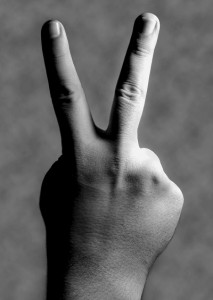 One day, my kid asked me how a calculator comes up with its answers. That’s a great question, I thought. How does a calculator do math?
One day, my kid asked me how a calculator comes up with its answers. That’s a great question, I thought. How does a calculator do math?
After thinking about it, I realized this was a great way to teach him about binary numbers. I am going to show you how to not only count in binary, but also help you understand the basis of all electronic devices by knowing this key element.